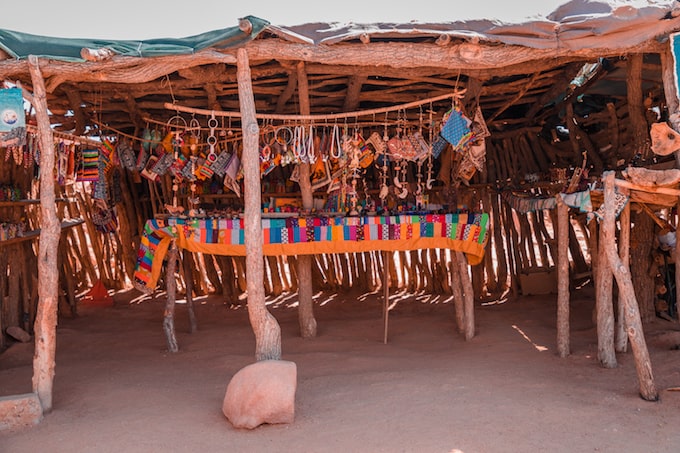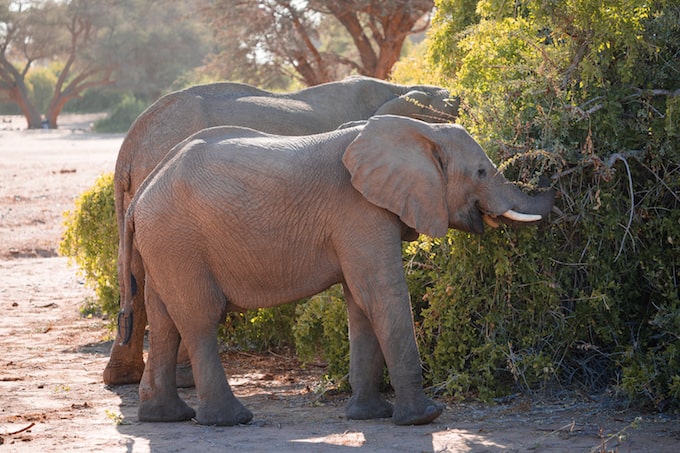Travelling to Africa should be on everyone’s bucket list. The huge continent is home to unparalleled geological wonders, incredible wildlife, and rich culture, and camping is a great way to see the best of it.
Namibia has quickly become one of the most popular camping destinations in Africa, due to its well-developed network of parks, reserves, and lodges, which makes it a great place to start for first-time travellers to Africa. Its bustling towns stand in stark contrast to the immense vistas you’ll see as you drive towards the desert.
Despite its burgeoning tourism infrastructure, the amount of planning required for a camping trip in Namibia shouldn’t be underestimated – you definitely don’t want to be unprepared for its scorching temperatures and bare desert landscapes, and you’ll want to plan your routes well to make sure you see the best sights. Joining a tour is a great way to alleviate some of the headaches of planning while making sure you hit all these must-see places on any Namibian tour itinerary. With the right preparation and guidance, it’ll be the most adventure-filled, eye-opening trip you’ll go on, and by the end of it, you’ll be itching to keep exploring on your own.
Fish River Canyon
This canyon is the second largest in the world (after the Grand Canyon), and home to some of the best hikes in southern Africa. This might be your first sight of the diverse Namibian flora that flourish despite harsh desert climates. One of the biggest takeaways of any trip to Namibia is the importance of conservation – it’s taken very seriously. Hikes here can quickly become challenging thanks to the canyon’s varying terrain, so it’s guaranteed to give you an exciting workout alongside stunning canyon views.

Namib Desert
The Namib is the world’s oldest desert, and, though it’s home to more endemic species than any other desert in the world, few humans live there. On the drive, you’ll see gravel roads give way to breathtaking desert sunsets. Start your desert adventure by exploring the desert dunes and learning about how the few inhabitants of this vast desert survive its harsh conditions. Then, climb the massive Dune 45 and check out the view from the top, or board a hot air balloon to see the desert from an even higher vantage point. One of the major attractions in the Namib Desert is Sossusvlei, a light-coloured salt and clay flat surrounded by contrasting vibrant red sand dunes. Another is Kolmanskop, a once-flourishing, now-abandoned diamond outpost that is slowly being reclaimed by the desert.

Swakopmund
In this Namibian coastal town, the desert sand transitions into a beach, and sand dunes are taken over by German-style buildings and seaside promenades. This is Namibia’s center of adventure – not only is it a popular starting point for tours to the Skeleton Coast and the Namib Desert, but there also many activities to do here that make Swakopmund a must-visit destination in its own right. For an adrenaline rush, go quad-biking, sand-boarding, and sand-skiing on the edge of the desert, and sail, surf, and kayak along the ocean shore. There’s no shortage of active things to do in Swakopmund, but for something less thrill-inducing, go visit the Cape fur seal colony nearby, or the flamingos at Walvis Bay if you wanted to check more animal sightings off your list.

Brandberg Mountains
The Brandberg mountains are the fiery landmarks of the Namibian landscape. These granite monoliths glow red with the sunset, reflecting its light, and its summit, Konigstein, towers over everything. The Brandberg Mountain area is definitely one you’ll want to thoroughly explore, whether in search of a rare glimpse of a desert-acclimated elephant, or the Brandberg’s famous rock paintings. Painted by bushmen, there are over 45,000 rock paintings in the area, so these archaeological treasures won’t be hard to spot. Look for the White Lady painting in the Maack shelter, about an hour’s hike away from the foot of the mountain.

Etosha National Park
Etosha National Park is the main event of any trip to Namibia. This park is one of the most important game and wildlife reserves in Africa, and an optimal place for spotting wildlife. Days could easily be spent traversing the expanse of the park, but you’ll never get bored of the animal sightings – elephants and giraffes roam freely, and you’ll see impalas and other game animals at every turn. Etosha National Park is named for the salt pan that lies in its center. It’s a mysterious chalky spectre when dry, and a magnet for the park’s wildlife when flooded by rain. The park plays an important wildlife conservation role, and is home the largest population of the endangered black rhinoceros. You’ll also be able to catch rare glimpses of lions, impalas, and maybe even cheetahs and leopards, especially if you stay near any of the park’s numerous waterholes.

Windhoek
A trip to Namibia wouldn’t be complete without a stop at its capital city at some point in the tour. Windhoek is the bustling center of Namibia, with traces of colonial history observable in its German-style architecture. Walk along its streets to see the extent of the city’s German influence, and visit its museums and galleries for a curated taste of its history and culture.
Pick up a souvenir of your journey at the Post St Mall, and start thinking about your next African camping destination!

If you’re looking for the ultimate in adventure on your next camping trip, Namibia should be at the top of your list. From the incredible natural beauty to the native animal species, there’s a new life-changing experience around every corner!
Have you been to Namibia? What was your favourite part?

